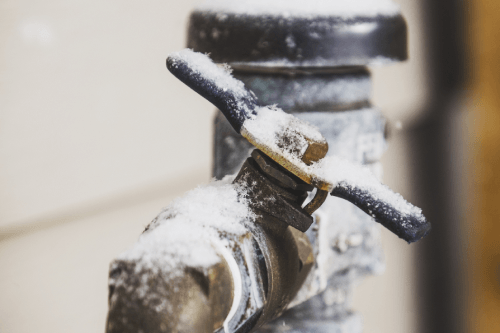Important Advice to Prevent Frozen Plumbing in Winter: Specialist Guidance
Important Advice to Prevent Frozen Plumbing in Winter: Specialist Guidance
Blog Article
Just how do you really feel when it comes to How to prepare your home plumbing for winter weather?

Cold weather can ruin your pipes, particularly by freezing pipes. Here's how to prevent it from occurring and what to do if it does.
Intro
As temperature levels drop, the danger of frozen pipes rises, potentially leading to costly fixings and water damages. Comprehending exactly how to avoid frozen pipelines is critical for house owners in chilly climates.
Avoidance Tips
Insulating prone pipelines
Cover pipelines in insulation sleeves or use warmth tape to safeguard them from freezing temperature levels. Concentrate on pipelines in unheated or external locations of the home.
Heating techniques
Keep interior spaces adequately warmed, particularly areas with pipes. Open up closet doors to enable warm air to circulate around pipelines under sinks.
Exactly how to recognize icy pipelines
Look for decreased water circulation from faucets, uncommon smells or noises from pipelines, and noticeable frost on revealed pipelines.
Long-Term Solutions
Architectural adjustments
Consider rerouting pipelines away from outside wall surfaces or unheated locations. Add additional insulation to attics, basements, and crawl spaces.
Updating insulation
Purchase high-quality insulation for pipelines, attics, and wall surfaces. Appropriate insulation aids maintain consistent temperatures and decreases the threat of icy pipelines.
Securing Outdoor Plumbing
Garden tubes and exterior faucets
Detach and drain yard hose pipes prior to wintertime. Mount frost-proof spigots or cover outside faucets with protected caps.
Understanding Icy Pipes
What causes pipes to freeze?
Pipes ice up when exposed to temperatures below 32 ° F (0 ° C) for expanded periods. As water inside the pipelines freezes, it increases, putting pressure on the pipeline walls and possibly triggering them to burst.
Risks and problems
Frozen pipes can lead to water supply interruptions, residential property damages, and expensive repair services. Ruptured pipelines can flooding homes and cause considerable architectural damages.
Signs of Frozen Pipeline
Determining frozen pipes early can avoid them from rupturing.
What to Do If Your Pipes Freeze
Immediate actions to take
If you presume frozen pipelines, maintain taps available to eliminate stress as the ice melts. Utilize a hairdryer or towels soaked in hot water to thaw pipes slowly.
Conclusion
Protecting against icy pipelines needs proactive actions and fast reactions. By understanding the reasons, indications, and safety nets, property owners can protect their pipes during winter.
6 Proven Ways to Prevent Frozen Pipes and Protect Your Home
Disconnect and Drain Garden Hoses
Before winter arrives, start by disconnecting your garden hoses and draining any remaining water. Close the shut-off valves that supply outdoor hose bibs and leave the outdoor faucet open to allow any residual water to drain. For extra protection, consider using faucet covers throughout the colder months. It’s also important to drain water from any sprinkler supply lines following the manufacturer’s directions.
Insulate Exposed Pipes
Insulating your pipes is an effective way to prevent freezing. Pipe insulation is readily available at home improvement stores and is relatively inexpensive. Pay close attention to pipes in unheated areas such as the attic, basement, crawl spaces, or garage. Apply foam insulation generously to create a buffer against the cold. You can also wrap your pipes in heat tape or thermostat-controlled heat cables for added warmth.
Seal Air Leaks
Inspect your home for any cracks or openings that could let in cold air. Seal any holes around the piping in interior or exterior walls, as well as the sill plates where your home rests on its foundation. Additionally, make sure to keep your garage door closed unless you’re entering or exiting. Leaving it open creates a significant air leak that can lead to frozen pipes.
Allow Warm Air Circulation
During cold snaps, it’s essential to allow warm air to circulate evenly throughout your home. Leave interior doors ajar to promote better airflow. Open kitchen and bathroom cabinets to help distribute heat consistently around the rooms. If you have small children or pets, be sure to remove any household chemicals or potentially harmful cleaners from open cabinets for safety.
Let Faucets Drip
A small trickle of water can make a big difference in preventing ice formation inside your pipes. When temperatures drop significantly, start a drip of water from all faucets served by exposed pipes. This continuous flow helps prevent the water from freezing. Additionally, running a few faucets slightly can relieve pressure inside the pipes, reducing the chances of a rupture if the water inside does freeze.
https://choateshvac.com/6-proven-ways-to-prevent-frozen-pipes-and-protect-your-home/

As a fervent reader on Helpful Tips to Prevent Frozen Pipes this Winter, I think sharing that piece of content was a smart idea. If you liked our post kindly remember to pass it around. Many thanks for going through it.
Request Service Report this page